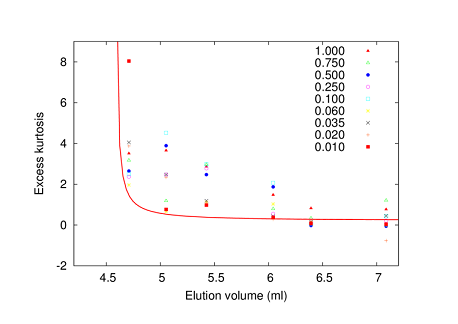
MiloÅ¡ NetopilÃk
Institute of Macromolecular Chemistry, Czech Republic
Title: Improving separation of polymers by size-exclusion and liquid chromatography on the background of the theoretical model
Biography
Biography: MiloÅ¡ NetopilÃk
Abstract
Size exclusion chromatography (SEC) is a widely used method of the separation of polymers according to their size (hydrodynamic radius in the first approximation). The usefulness of the method is increased by benefits of additional detectors (light scattering, viscometer, UV detector) which exploit maximum information about the sample (hyphenated methods). The basic functioning of chromatographic separation can be described by a relatively simple mechanism of establishing equilibrium on each of theoretical plates followed by a shift of the mobile phase by the size of the plate. The model applies for SEC with the separation driven by entropy as well as for liquid chromatography driven by enthalpy. From this observation chromatographic models ensue. The results of the chromatographic models are the band broadening function. The basic mechanism of separation is accompanied by numerous side effects and mechanisms which depend on conditions of analysis, as flow-rate, influencing the equilibrium, the detector-cell volume, etc. The systematic experimental investigation of analysis of polystyrene standards by size exclusion chromatography evaluated on the background of the plate-height model of separation provides the insight into the mechanism and its efficiency, a measure of reaching equilibrium. For polymers of molecular weight about thirty thousand and higher, the separation improved with decreasing flow-rate is in accord with Giddings observation of transversal diffusion as a factor decreasing the broadening of the band broadening function. The variance of the elution curves is larger than it corresponds to dispersity in molecular weight and the shape of the elution curves depends on the experimental conditions which suggest that it reflects properties of the band broadening function. The skew and the excess kurtosis of the elution curves increases near the exclusion limit in accord with theoretical prediction. The excess kurtosis of the elution curves, obtained by SEC of polystyrene standards in tetrahydrofuran using pumps and UV detector DeltaChrome, and one column PL gel MIXED D is depicted in Figure 1. The points for the lowest flow-rate of 0.01 ml/min fit the theoretical line best.



